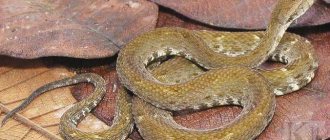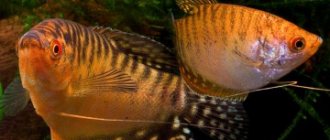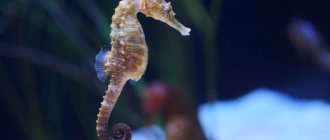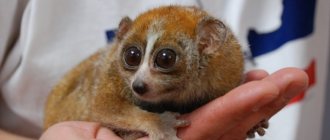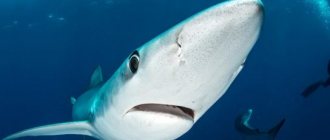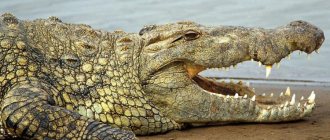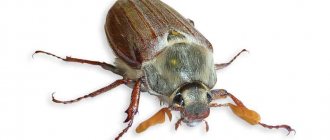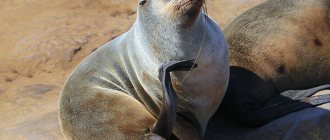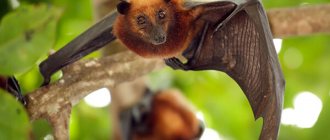Of the inhabitants of the underwater world, the most unusual, but known to everyone, are seahorses. They belong to the needle family of the order Acicularis. The fact is that they are fellow fish called pipefish, whose bodies are retracted, narrow and long. The largest seahorses are called dragons, and in total there are about 50 species of seahorses.
After analyzing the structure of the seahorse, scientists found that it originated from the pipefish fish 13 million years ago. In appearance, these species are very similar, only the needle is straightened and the ridge is curved.
Description of the underwater “horse”
At first glance, it seems that the pipit is not a fish at all. If you look at the photo of a seahorse, it looks like a knight in chess pieces. The silhouette of this unusual fish is curved, the abdomen stands out forward, and the back is rounded. The front part of the skate's body is narrow and curved so that it resembles the neck and head of a horse. The front part of the head is elongated, the fish has bulging eyes. The long tail is wrapped in a spiral. The tail is quite flexible, which allows the seahorse to wrap itself around seaweed.
Its body is covered with a wide variety of bumps, thickenings and outgrowths. On their small body there are bone scales that act as armor; they are bright and iridescent. Such a skate shell cannot be penetrated; it is very strong and protects against sea predators.
Their colors vary in variety, but are still monochromatic. The color of the skates' covering depends on their habitat; they acquire the most similar color to best imitate the surface on which they live. So, for example, if a seahorse is among the corals, then most likely it is red or bright yellow or purple. Pipits that live in seaweed environments are brown, yellow, or green in color. They also tend to change shade when their environment changes.
Seahorses are small in size, the smallest start from 2 cm, and the largest reach 20 cm.
Description and features of life
Seahorses are fish. They belong to the animal kingdom (class of Ray-finned fish). Long-term studies have shown that seahorses are relatives of pipefish. These are small animals, in most cases reaching a size of up to 24 cm in length. They have a very interesting body shape, reminiscent of a horse. This is where its name comes from. They can change their color like chameleons.
Important! There is information about more than 35 species of seahorses.
Habitat
Most often, seahorses can be found in tropical and subtropical zones. But there are species that prefer to live near the English south coast, in the Mediterranean and Black Seas, as well as near Australia.
Anatomy
The body of a seahorse is covered with a hard shell, necessary for protection. There are also spikes of different shapes and lengths. He has no scales. Skates cannot turn their heads due to the special structure of their skeleton. Therefore, in order to turn around, they turn their entire body or bulge their eyes greatly.
But these are not all the features of the anatomy of seahorses. They are able to move each eye individually. Only chameleons have this ability. In this case, the eyes can rotate 300 degrees. The sea horse swims vertically in the water, but not only straight, but also up or down. This is facilitated not only by the size of the seahorse, but also by the swim bladder, separated by a septum.
Important! If the swim bladder is damaged, the animal sinks to the bottom and dies over a long period of time.
They swim very funny, fluttering their tiny fins. Typically, skates swim short distances from one support point to another. In addition to the swim bladder, these fish maintain their balance with the help of internal ears located in the skull. They are also responsible for orienting the seahorse in the water.
They have an excellent sense of smell thanks to a special organ located under the eyes. The seahorse's nose is a strip with two nostrils. They communicate with each other using special sounds that resemble clicks. They make these noises by rubbing their heads against their outer shell. This is how the fish notify each other of danger.
Character and lifestyle
Seahorses are quite lazy by nature. They move slowly, swimming no more than 150 m in an hour. They are predators, but not aggressive. Most of the time they prefer to cling to corals or algae and hang motionless.
It’s interesting that most skaters are monogamous. They create one couple and are faithful to each other all their lives. If one of the pair dies, the surviving horse stops eating, loses interest in breeding, and soon also dies. Therefore, you cannot take them from their natural habitat and put them in an aquarium. For this purpose, there are specially bred seahorses that are accustomed to living in such conditions.
Social structure
It is extremely rare for a seahorse to live in a school. It is common to see several pairs of individuals living together. But even in this case, an individual can easily change flocks. But most often they swim together, almost never changing partners.
Natural enemies
The habitat of seahorses is shallow water. Therefore, humans pose a special threat to them, and not other, larger predators. It's not just fishing or pollution, although fishing and, in particular, shrimping has greatly reduced the population of skates. In Eastern medicine, seahorses are used to create a huge number of medicines. More than 150 million fish are caught annually for this purpose. They are also considered a delicacy.
Pipit fry love to eat shrimp. But even large fish do not eat adults - they cannot digest their hard shell. This is confirmed by the remains of undigested seahorses, sometimes found in the stomachs of dolphins or sharks.
Important! Only a sand crab can eat a seahorse, the acidity of its stomach can dissolve its hard shell.
Natural diet
The seahorse feeds by eating mainly branchial crustaceans. In a day, a seahorse can eat about 3 thousand of these crustaceans. This is influenced by a very fast digestive process and the absence of a stomach, forcing him to look for food almost all the time. The seahorse's mouth in the form of a long tube makes it possible to eat not only carnivorous food, but also plant food.
Lifestyle
Skates swim a little, not far from their usual place and slowly, while keeping their body vertical - this is one of the main differences from other fish. In an emergency, if they are spooked, they can swim in a horizontal position. When in danger, the seahorse quickly clings to coral or algae with its tail and freezes. He hangs upside down motionless. The skate can remain in this position for a very long time.
They also differ from other inhabitants of the seabed by their meek and calm character. These fish are not aggressive towards others. But they are still classified as predatory fish, since they feed on various small organisms - plankton. They track the smallest mollusks, crustaceans, larvae of other fish and other invertebrates with their rotating eyes. When the prey comes close to the seahorse, it sucks it into its mouth, while strongly inflating its cheeks. This little fish is insatiable and can feed for about 10 hours a day.
Habitat
Seahorses are found in subtropical and tropical seas, some species are found in the Black and Azov seas. Representatives choose shallow waters well warmed by the sun, where there are many corals. You can see them in reservoirs in England and Australia.
They prefer transparent and calm places and love to live among algae .
By changing colors, the seahorse merges with the surrounding world. This helps him get lost in the algae and not get caught for lunch by predators.
Reproduction of seahorses
It should also be noted that these fish are monogamous. They say about seahorses that these fish live in married pairs all their lives. But it still happens when they change their partners. Another key feature is that male seahorses carry the eggs instead of females. During the mating season, skates change: the female grows an ovipositor in the form of a tube, and the male develops a pouch with thickened folds in the tail area. Before fertilization, the partners undergo a rather lengthy mating dance. This is touching courtship on the part of the male. It was also revealed that the male seahorse seems to adapt to the female, changing the color of his coat to match her.
The female places eggs in the male's pouch. So the male carries the eggs for about two weeks. There is a small hole in the bag through which the fry are born. As for sea dragons, they do not have a pouch. They hatch eggs on the very stem of the tail. The number of eggs varies among different species of skates. So, some may have 5 fry, while others may have 1500 eggs.
The birth itself is painful for the male. It happens that the outcome of the birth of fry is fatal for the skate.
Reproduction and birth of young
Having created a family once, seahorses do not separate for the rest of their lives.
Females themselves choose a husband and father for their future children.
When she likes someone, she tests him in dance for three days. If the male does not lag behind her, while managing to exchange clicking signals, they create a family with him and begin mating. This is another dance that lasts up to 8 hours.
During the dance, the female releases eggs, and her partner collects them in a pocket until it becomes full (more than 600 eggs can fit there). Then they are fertilized and gestated.
After 40 - 50 days, the fry are born. Childbirth continues until the bag is empty. This is a lot of stress for a male’s body, because he can give birth to from 5 to 1,500 babies. Their length is 6 mm.
When the fry leave the pouch, the first thing they do is cling to each other with their tails, forming a garland.
Experiment
One day scientists conducted an experiment. A pair of males and a pair of females were placed in one aquarium to breed seahorses. After all the traditional courtship, the female laid her eggs to one of the males for further fertilization. The fertilized male was removed to a nearby aquarium. The remaining male tried to court this female, but all his efforts were in vain. She did not pay attention to him and did not try to lay eggs in his pouch. When they finally returned the male back to the aquarium with the female, she again chose him to fertilize her offspring. So he was removed again and again after the eggs were placed on him. Despite the fact that the second male continued to court her, the female seahorse still chose her previous male to reproduce. The experiment with fish was done 6 times - everything remained unchanged.
Origin
Based on anatomical, molecular and genetic studies, the seahorse has been identified as a highly modified pipefish.
The creature gradually evolved and as a result it divided into 2 species - the seahorse itself and the needle fish. According to scientists, this is due to tectonic shifts and the formation of large areas of shallow water. Algae formed on the shallows, in which seahorses subsequently settled.
Fossilized remains of seahorses are quite rare. The most studied fossils of the species Hippocampus guttulatus (synonym - H. ramulosus) from the formations of the Marecchia River (Italian province of Rimini). These finds are dated to the Lower Pliocene (about 3 million years ago). The earliest seahorse fossils are believed to be two Middle Miocene spinyfish species, Hippocampus sarmaticus and Hippocampus slovenicus, discovered in Slovenia.
Their age is estimated at 13 million years. According to the molecular clock method, the seahorse and pipefish species diverged in the late Oligocene. There is a theory that this genus appeared in response to the emergence of large areas of shallow waters, which was caused by tectonic events. The appearance of vast shallows led to the spread of algae, and, as a result, the animals living in this environment.
Skates can mimic like chameleons. By changing the color of their body, they blend in with the vegetation, thereby avoiding the attention of both predators and potential prey.
The average seahorse can live for four to five years. Seahorses navigate the ebb and flow of the tides, when strong currents can carry away the fry. During the breeding season, fry hatch every 4 weeks. Immediately after birth, they are left to their own devices. The fry of some species move with the current, while others remain at the place of birth.
Skates in the Red Book
Nowadays, most species of seahorses are rare, and some are completely disappearing from the seabed. After all, 30 species are listed in the Red Book. And all because the seahorse reproduces in small quantities. A ban has been introduced on the catch of skates. But despite this, people catch these fish in huge quantities for cooking. Gourmets consider the fillets of these fish to be truly a delicacy and sell them at incredible prices. Skates are also used in oriental medicine; various drugs are made from them for skin diseases and asthma. Because of their unusual, beautiful appearance, skates are dried and sold in large quantities as souvenirs. People specially bend the tail of the skate in the opposite direction so that its shape becomes shaped like the letter S. Such fish do not exist in nature.
Water pollution also plays a large role in the extinction of most species of seahorses. After all, every year more and more waste and chemicals processed by industries are thrown into the oceans. Environmental accidents and other pollution affect the extinction of corals and algae, which are so necessary for the life of seahorses.
Humans are a big threat to them
The hard shell makes seahorses quite difficult for other fish to digest, so they have virtually no natural predators. Apart from crustaceans, which can pluck them with their sharp pincers, humans are probably one of the most serious threats to this species.
Seahorses most often live in shallow waters close to the coast, so human activities such as pollution, fishing and industrial development threaten their numbers. They are also often caught for use as aquarium pets and in traditional Asian medicine. According to scientists, more than 150 million seahorses are captured from the wild each year for use in traditional medicine.
Seahorses born in the wild usually do not do well in home aquariums. About 1 million are taken from the wild each year for the pet trade, and fewer than a thousand are thought to survive beyond six weeks.
Breeding seahorses at home
Despite the desire of many aquarium owners to have such an interesting fish at home, the pipit is very demanding for breeding at home. It is susceptible to various diseases and is too picky about feed.
Rare species of skates have a very difficult time staying in an aquarium. They may become stressed or get sick. Therefore, when breeding fish at home, it is necessary to create conditions close to their natural habitat. If you carefully approach the breeding of a seahorse, it will delight its owner for 3-4 years.
The seahorse is an incredible creature. Description and photo of the seahorse
The seahorse is a small fish, which is a representative of the Spine family from the order Stickleback. Research has shown that the seahorse is a highly modified pipefish. Today the seahorse is a rather rare creature. In this article you will find a description and photo of a seahorse and learn a lot of new and interesting things about this extraordinary creature.
Aquarium
It is necessary to monitor the temperature of the water in the aquarium. The optimal water temperature for them is approximately 23-25 degrees Celsius. For hot days, you need to take care of installing an aquarium split system or turn on a fan nearby. Otherwise, hot air has a detrimental effect on these fish, and they will simply suffocate.
In order for a seahorse to feel comfortable at home in an aquarium, it is necessary to monitor the quality of the water in it. The water in the aquarium should not contain ammonia or phosphates. You need to put corals and algae on the bottom. Various grottoes, jugs, castles and other products made from artificial materials are also welcome.
Feeding
The feeding process for skates is different from feeding other fish.
They are fed with live regular shrimp, brine shrimp, frozen Mysis shrimp, sea goats, bloodworms, and daphnia.
Fish bred in captivity will happily accept frozen Mysis, while sea-caught pipits will refuse them and will only eat live food. Since obtaining live food involves some hassle, it is worth accustoming your skates to thawed and dry food.
The horse can eat dry fish food, ground to the desired state. Over time, a colony of living gammarus and mysids can form in the aquarium, which the pipits will happily hunt.
Also, you should not feed your fish exclusively with brine shrimp - they lack important substances and have low nutritional value.
The food should always be fresh and fed daily. One individual eats 6-7 shrimp at one meal. They are fed three to four times a day.
There are two feeding methods:
1. From hand. Feed is given using hands or a rubber syringe. The method is slow, it will take 15-20 minutes to slowly feed one portion, but it is suitable as fun.
2. Feeders. Shells, stones with grooves, glass saucers and containers are suitable as feeders. Food is placed in these feeders, the fish swim up and eat at a time convenient for them.
The fish need to be fed first - using a syringe, lower the shrimp several times into the feeder and the skates will figure out where and when to swim for food.
Place several sticks near the feeder - the skates will cling to them with their tails while eating.
Content Features
The seahorse is very demanding to care for, so owners of such royal fish need to be patient and persevering. Here are some features you need to know about:
- The gills of seahorses differ from other fish in their low functional capacity. Because of this, skates have limited gas exchange. It is necessary to constantly artificially supply and maintain oxygen exchange in the aquarium. Water filtration should not be neglected.
- The gluttony of skates is explained by the lack of a stomach. They eat frequently to maintain energy balance.
- Since they do not have fish scales to act as an immune system, they must be monitored and checked frequently for damage or any changes to their body.
Anatomy
Its body is located vertically in the water because the swim bladder is located along the entire body and is divided by a partition that separates the head part from the rest of the body. The head bladder is larger than the abdominal one, which provides the skate with a vertical position when swimming. The smallest species of seahorses reach only 2 centimeters in length, and the largest - up to 30.
All skates lead a very sedentary lifestyle, mainly due to their low movement speed. The slowest fish in the world is the tiny dwarf seahorse, which can swim only 1.5-2 meters in an hour.
Seahorses do not have a stomach - incoming food is immediately absorbed and waste is eliminated, so they need to continuously feed throughout their lives, otherwise they will die of starvation.
The eyes of seahorses are able to look in different directions at the same time. Few living creatures on Earth have this feature.
Despite their harmless appearance, all seahorses are predators. Staying motionless, they wait until prey is nearby, after which they grab it. Their victims are usually small crustaceans and shrimps
Neighbors in the aquarium
Next door you can place calm fish or invertebrates in the aquarium. The fish should be small, slow and careful. Ideal neighbors for seahorses would be blennies and gobies. They get along well with a snail, which does not sting corals and cleans the aquarium perfectly. You can also consider living stones as inhabitants of the “house” of needle-shaped fish. These are small pieces of limestone that have been in warm tropical waters for some time and are inhabited by various living organisms. All new neighbors must be healthy to avoid infecting the seahorses.
If you read reviews about seahorse breeding, people write that for two pairs of these fish you need an aquarium volume of 150 liters.
The seahorse is an incredible creature. Description and photo of the seahorse
The seahorse is a small fish, which is a representative of the Spine family from the order Stickleback. Research has shown that the seahorse is a highly modified pipefish. Today the seahorse is a rather rare creature. In this article you will find a description and photo of a seahorse and learn a lot of new and interesting things about this extraordinary creature.
Compatibility with other inhabitants
Due to its leisurely behavior, the seahorse will not be able to get along with every aquarium inhabitant. They are slow, prone to stress, and have difficulty accepting change.
Familiarize yourself with the features of keeping shrimp and snails in an aquarium: ampularia, coils, meadows, igloo fish, aquarium axolotl, crabs.
It is often even recommended to keep a separate aquarium just for skates. There is quite a lot of truth in this advice, but with proper planning, it is quite possible to organize a well-functioning system from different types of fish, corals, and shellfish.
Skates coexist well with:
- fish - blennies Synchiropus, scorpion fish, some cardinal fish and royal Gramm, small species of gobies. The main factor to determine a good neighbor is its low activity. Highly active fish will irritate the skates, suppress them, and take away food.
Important! First, you need to plant the skates in an empty aquarium, and only after a few days, in small batches of selected neighbors.
- invertebrates - all types of snails will be good, even useful neighbors - they clean the surface of the aquarium and the water from sediments and food debris. Small hermit crabs will coexist quite peacefully;
- living stones are good neighbors. The only thing to remember is that all stones must be processed and treated. Otherwise, the fish may become infected with infections or parasites.
Dangerous neighbors:
- fish - any large, active fish will irritate the skates and take away their food;
- invertebrates - large crayfish, crabs, shrimp can attack skates and inflict wounds on them with their claws, sea anemones can sting with stinging cells;
- corals - almost all corals are bad neighbors, many species have stinging cells, others require intense light. There are several types of corals that can be added, but if you are not completely sure that this is exactly the right coral, then it is better not to risk it and replace the living one with an artificial one.
Popular types
There are about 50 species of seahorses in their natural habitat. Each of them differs in size, appearance and some structural features. The most common are the following:
- The spotted species is large in size. It is gray in color with small spots all over the body. Life expectancy is no more than 4 years under favorable conditions.
- The rainbow variety is considered the most beautiful, since individuals have a varied and bright color. The maximum size is 20 cm.
- Deciduous specimens are quite unusual because they have long leaf-like shoots instead of the usual thorns. The length of each sometimes reaches 30 cm. This species is often called the sea dragon.
- The weed pipit is quite unusual. It has a bright color with iridescent blue stripes. Its peculiarity is its long snout in the form of a tube, which is used for obtaining food. This species is listed as endangered.
The pot-bellied pipit reaches a length of 37cm - The Black Sea variety does not have thorns. The body is translucent with a slight yellow tint. Quite often found in shallow water, which makes it different from other species.
- The spiny pipit resembles the Black Sea pipit in appearance, but has sharp spines 2-3 cm long. The maximum size of individuals does not exceed 25 cm. It lives very close to the bottom and is rarely found in shallow water.
- The pot-bellied pipit is the largest representative with a body length of up to 37 cm. The first impression when looking at it is positive. The species is not intimidating and is quite peaceful towards humans, as well as other inhabitants of the deep sea.
In Southern Japan you can find dwarf individuals. They are painted in light colors with purple stripes or spots. They camouflage well as corals. They have a body length of no more than 3 cm. They prefer not to descend to a depth of more than 40 meters.
